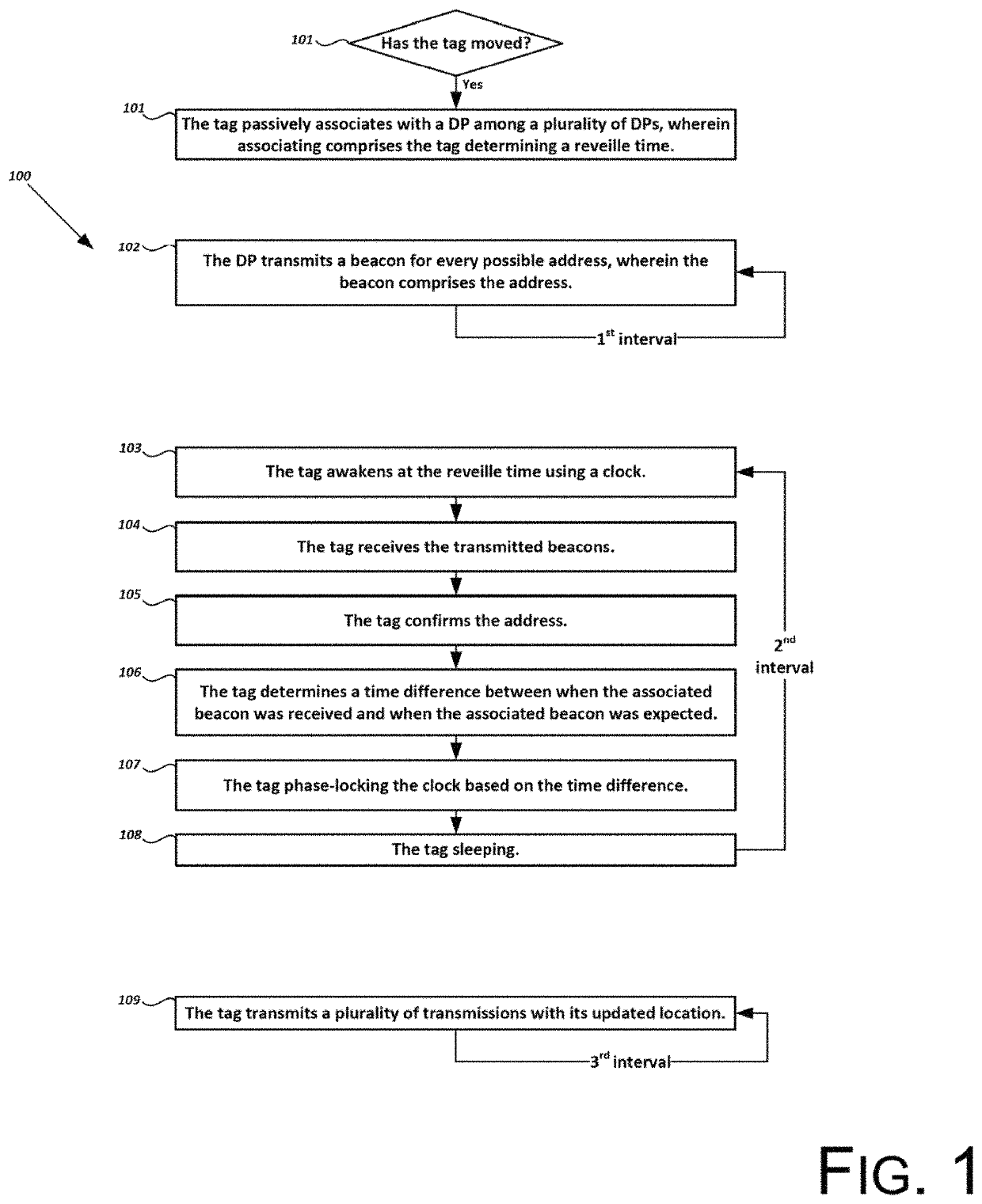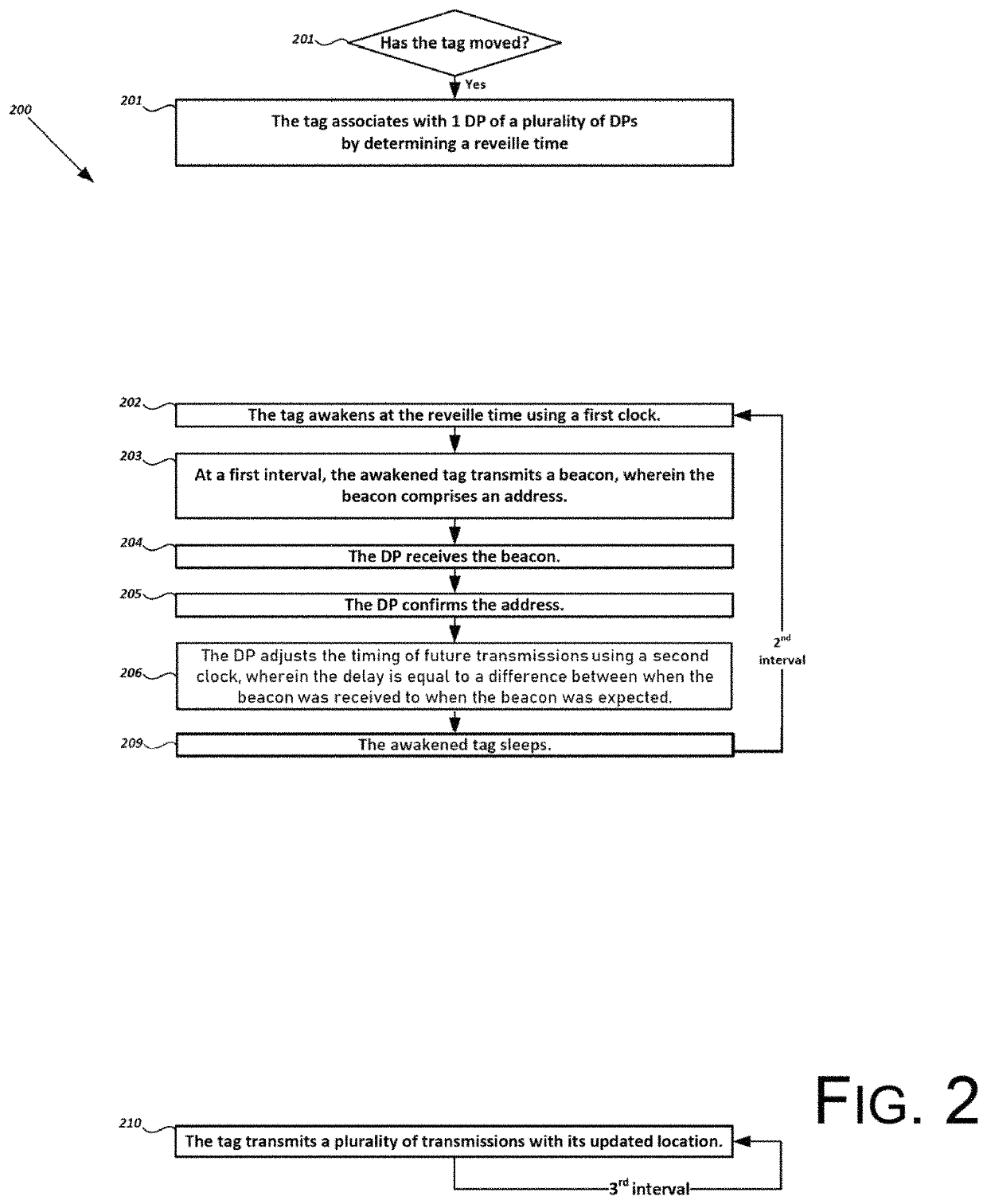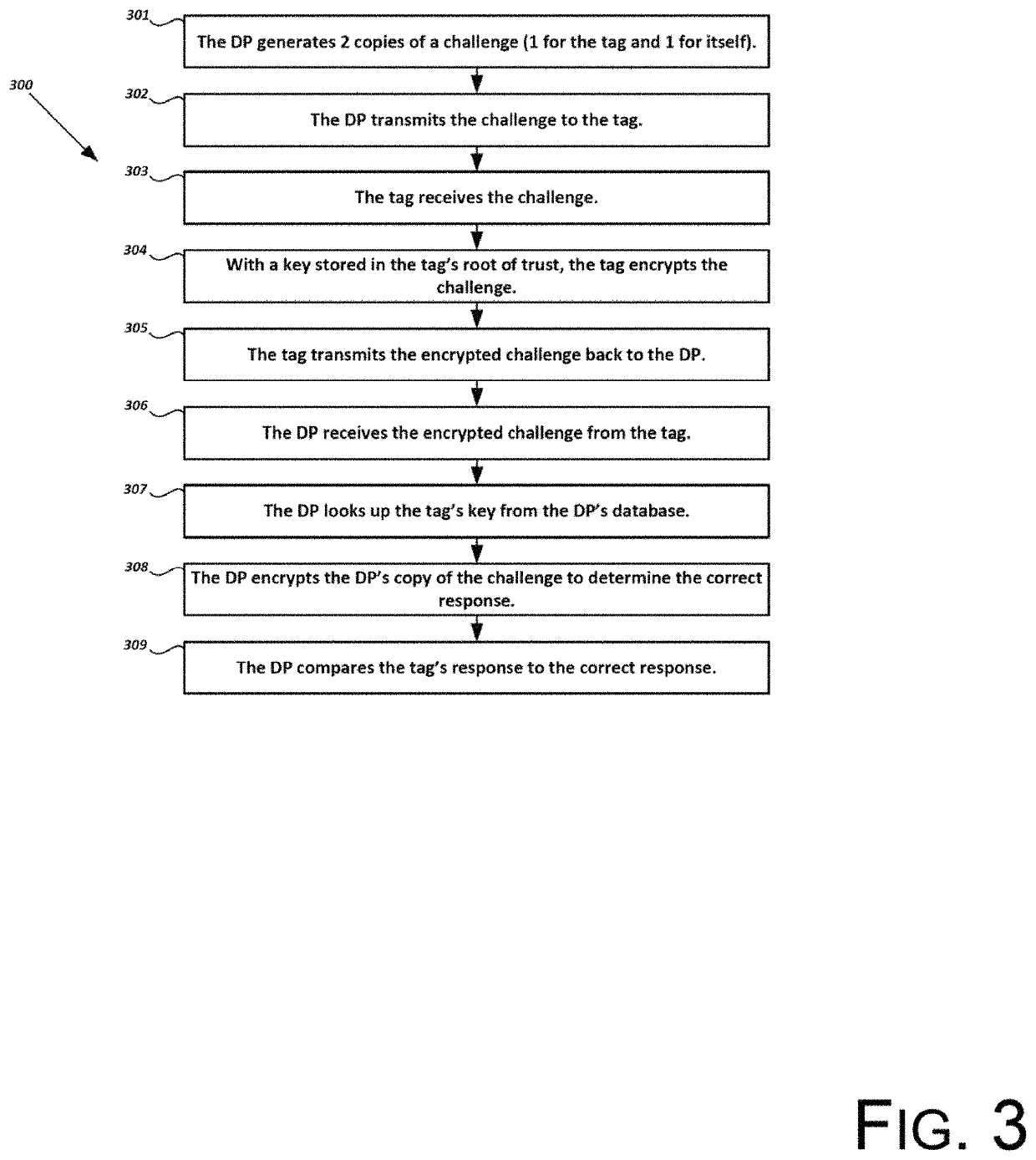Method for waking from energy-efficient hibernation
a hibernation and energy-efficient technology, applied in the field of radiofrequency indoor localization, can solve problems such as limiting energy efficiency, and achieve the effects of significant power saving, high probability of corruption and failure, and conservation of energy
- Summary
- Abstract
- Description
- Claims
- Application Information
AI Technical Summary
Benefits of technology
Problems solved by technology
Method used
Image
Examples
example
[0088]The following is a non-limiting example of the present invention. It is to be understood that said example is not intended to limit the present invention in any way. Equivalents or substitutes are within the scope of the present invention.
[0089]Referring to FIG. 6, a specific embodiment of the present invention features a method (600) of waking from energy-efficient hibernation to transmit an indoor localization beacon by initiating a WakeUp subroutine. The method may comprise a tag (1001) passively associating (601) with a detection point (DP) (1002) of a plurality of DPs if the tag (1001) has moved to a new location. The procedure for associating may comprise the tag (1001) determining a reveille time to transmit a beacon addressed to the DP (1002). The reveille time may be equal to at least one of a hash or a concatenation of a tag ID and a DP ID. The method may further comprise the DP (1002) transmitting (602) every 100 milliseconds a beacon 4 times for every array index o...
PUM
 Login to View More
Login to View More Abstract
Description
Claims
Application Information
 Login to View More
Login to View More - R&D
- Intellectual Property
- Life Sciences
- Materials
- Tech Scout
- Unparalleled Data Quality
- Higher Quality Content
- 60% Fewer Hallucinations
Browse by: Latest US Patents, China's latest patents, Technical Efficacy Thesaurus, Application Domain, Technology Topic, Popular Technical Reports.
© 2025 PatSnap. All rights reserved.Legal|Privacy policy|Modern Slavery Act Transparency Statement|Sitemap|About US| Contact US: help@patsnap.com



